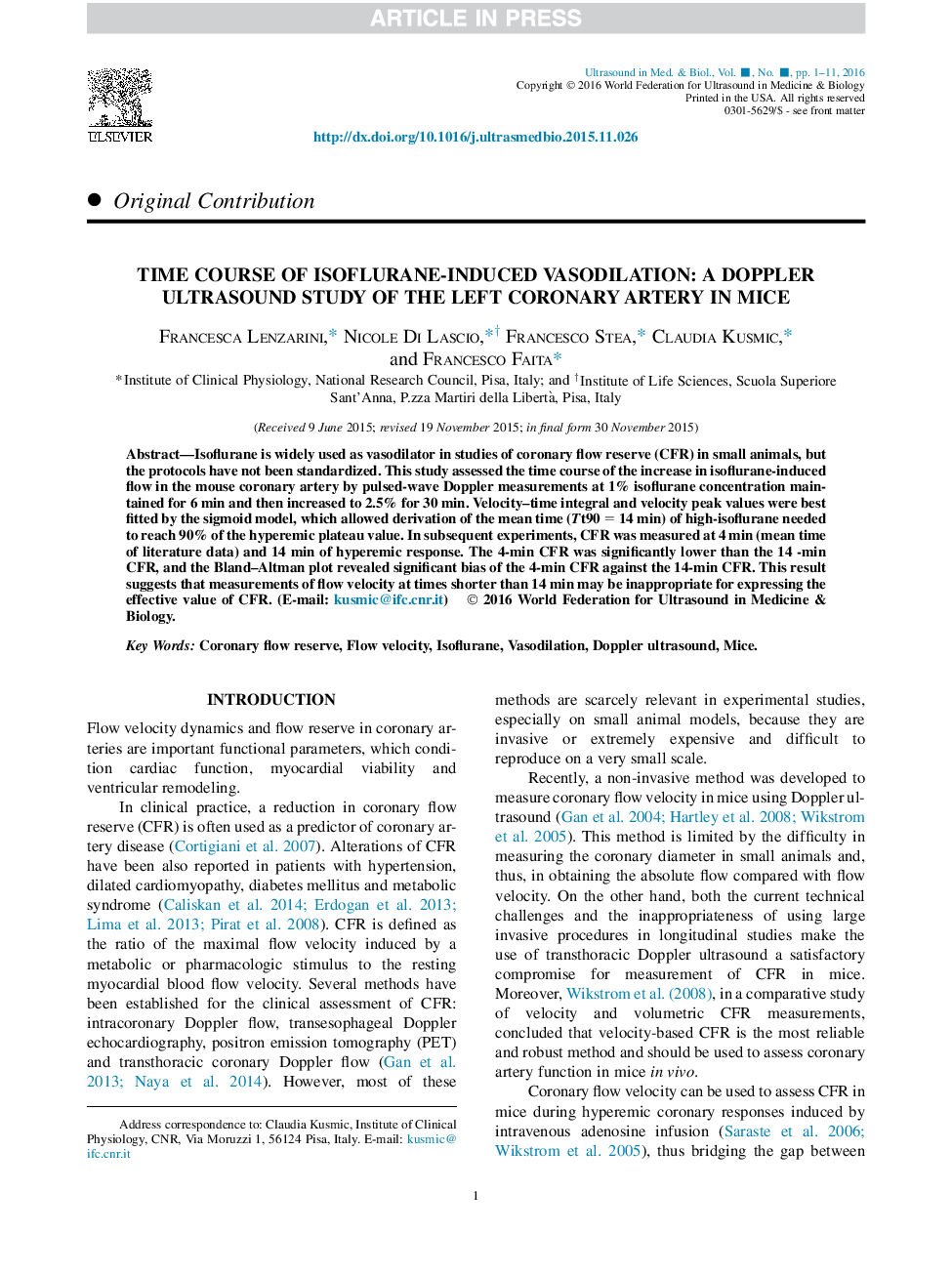| Article ID | Journal | Published Year | Pages | File Type |
|---|---|---|---|---|
| 1760249 | Ultrasound in Medicine & Biology | 2016 | 11 Pages |
Abstract
Isoflurane is widely used as vasodilator in studies of coronary flow reserve (CFR) in small animals, but the protocols have not been standardized. This study assessed the time course of the increase in isoflurane-induced flow in the mouse coronary artery by pulsed-wave Doppler measurements at 1% isoflurane concentration maintained for 6Â min and then increased to 2.5% for 30Â min. Velocity-time integral and velocity peak values were best fitted by the sigmoid model, which allowed derivation of the mean time (Tt90Â =Â 14Â min) of high-isoflurane needed to reach 90% of the hyperemic plateau value. In subsequent experiments, CFR was measured at 4Â min (mean time of literature data) and 14Â min of hyperemic response. The 4-min CFR was significantly lower than the 14 -min CFR, and the Bland-Altman plot revealed significant bias of the 4-min CFR against the 14-min CFR. This result suggests that measurements of flow velocity at times shorter than 14Â min may be inappropriate for expressing the effective value of CFR.
Related Topics
Physical Sciences and Engineering
Physics and Astronomy
Acoustics and Ultrasonics
Authors
Francesca Lenzarini, Nicole Di Lascio, Francesco Stea, Claudia Kusmic, Francesco Faita,
